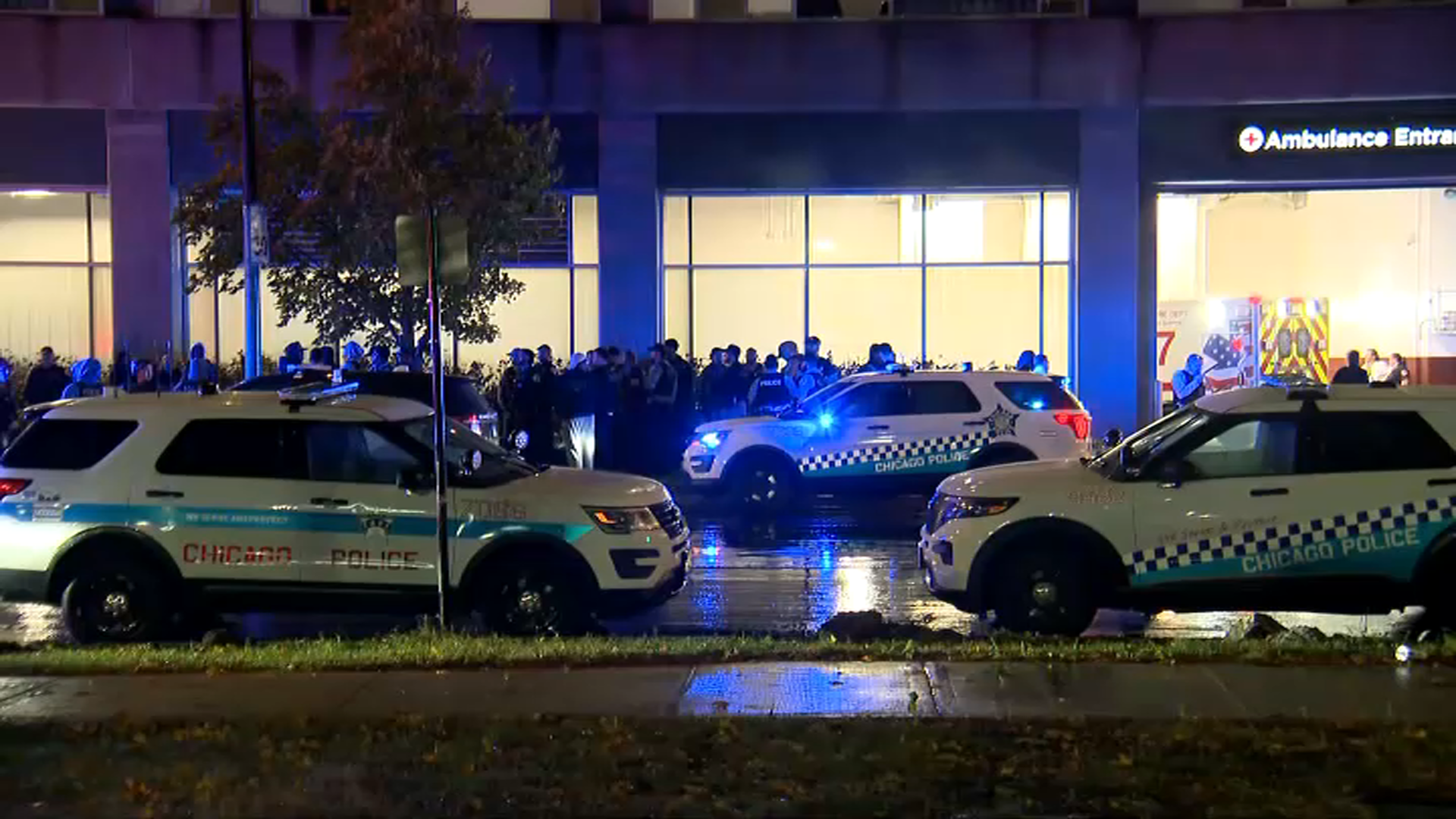Another Chicago-area county has seen its COVID transmission risk rise under guidelines from the Centers for Disease Control and Prevention.
It marks the second county to rise to the "medium" risk category this month.
Meanwhile, COVID vaccines for kids under 5 takes another big step forward, but when could answers come for parents?
Here's what you need to know about the coronavirus pandemic across Illinois today:
Suburban Cook County Now in Medium COVID Transmission Risk: Health Officials
Suburban Cook County is now in a "medium" risk level for COVID transmission, according to the area health officials.
The Cook County Department of Public Health issued an alert Friday afternoon saying "an increase in the number of positive cases" lifted the county to the second-highest risk level, as designated by the Centers for Disease Control and Prevention.
Local
Though the county was not listed on the CDC's most recent county-by-county transmission risk update, CCDPH said its metrics as of Thursday indicate suburban portions are under the "medium" risk level.
Read more here.
Feeling out of the loop? We'll catch you up on the Chicago news you need to know. Sign up for the weekly Chicago Catch-Up newsletter.
Coronavirus in Illinois: 24K New Cases, 46 Deaths in Last Week as Cases Continue to Climb
Illinois health officials reported 24,646 new COVID-19 cases over the past week, along with 46 additional deaths. That's an increase in cases, but a decrease in deaths from this time last week.
The previous week, the state reported 19,551 new and 58 deaths. The week before that, the state reported 14,049 new cases and 45 deaths were reported.
Read more here.
Another Chicago-Area County Rises to 'Medium Community Level' for COVID: CDC
As COVID cases continue to rise in Illinois and in the U.S., five Illinois counties are now experiencing medium risk levels for the virus, according to the U.S. Centers for Disease Control and Prevention.
As of Friday, Lake, DuPage, Champaign, McLean and Logan counties are all listed under the CDC's "medium" transmission risk level, the second-highest level on the CDC's scale. The designation means elderly or immunocompromised individuals are urged to wear masks in public indoor spaces.
Last week, four counties were at the medium community level. Lake County marks the second Chicago-area county to rise to the medium level.
Read more here.
COVID Vaccines for Kids Under 5: When Could Shots Begin? The Latest Timing
As Moderna took the next step forward toward getting the first COVID vaccination authorized for children under the age of 5, when could parents expect shots to begin?
Frustrated families are waiting impatiently for a chance to protect the nation’s littlest kids as all around them people shed masks and other public health precautions -- even though highly contagious coronavirus mutants continue to spread.
The nation’s 18 million children under 5 are the only age group not yet eligible for vaccination.
While the race is on to get the youngest members of the population vaccinated, which vaccine will work best and when might one be approved?
Moderna Asks FDA to Approve Its COVID-19 Shot for Kids Under 6
Moderna on Thursday asked U.S. regulators to authorize low doses of its COVID-19 vaccine for children younger than 6, a long-awaited move toward potentially opening shots for millions of tots by summer.
Frustrated families are waiting impatiently for a chance to protect the nation’s littlest kids as all around them people shed masks and other public health precautions -- even though highly contagious coronavirus mutants continue to spread.
Read more here.
COVID by the Numbers: Illinois Reports More Than 3,000 New Cases Amid ‘Deceleration' in Pandemic
Amid comments by top U.S. health officials that the COVID-19 pandemic is “decelerating,” Illinois is still seeing more than 3,000 new cases of the virus a day, according to the state’s latest data.
According to the Illinois Department of Public Health, the state saw 3,434 new cases of COVID-19 in the last 24 hours. That brings the state’s average of daily COVID cases down slightly, with 3,070 new cases per day according to officials.
Even with the slight decline, the number is still up nearly 20% from a week ago, according to IDPH data.
Read more here.
Gov. Pritzker on Fauci's COVID Pandemic Comments: 'I Hope and Pray That He's Accurate'
Illinois Gov. J.B. Pritzker said he hopes Dr. Anthony Fauci is right when he says the worst of the pandemic may be behind the U.S., but whether or not current levels can be maintained remains to be seen.
Fauci, the nation's top infectious disease expert, said Wednesday the coronavirus is under better control in the United States, but the pandemic isn't over.
His comments came a day after he said on the PBS “NewsHour” that the U.S. was “out of the pandemic phase” and also told The Washington Post that the country was finally "out of the full-blown explosive pandemic phase.”
Read more here.
Chicago COVID Metrics: City at ‘Low Community Level' of Transmission Even as Cases Rise
Even with COVID cases increasing by 26% in the last seven days, Chicago health officials say that the city remains in a “low community level” risk of COVID transmission, with hospitalizations remaining largely steady despite the increase in cases.
According to the latest data released by the Chicago Department of Public Health, the city is averaging 585 new cases of COVID-19 per day over the last week. That represents an increase of 26% from the week prior, according to officials.
Read more here.
Cases of Subvariant Descended From ‘Stealth Omicron' Continue to Increase: CDC
A new version of the omicron variant is continuing to spread across the United States, with the Centers for Disease Control estimating that the descendant now accounts for nearly one-third of cases in the country.
According to the latest estimates provided by the department Tuesday, the BA.2.12.1 subvariant accounted for an estimated 28.7% of COVID cases in the United States in the last week.
Read more here.
How Long Are You Contagious With COVID and How Soon Could Symptoms Start? Here's What to Know
If you test positive for coronavirus or were exposed to someone who has, when could symptoms start, how long are you contagious, how long should you quarantine for and when should you get tested?
With COVID cases slowly rising in Illinois and parts of the U.S., local health officials have issued warnings to take precautions, particularly in areas where transmission risk is increasing.
Illinois has seen new cases of the virus increase by more than 40% in the last week.
Read more here.
COVID or Allergies? Here's How to Tell the Difference in Symptoms
With high levels of tree pollen wafting through the air and COVID variants lingering around, it can be difficult to identify the reason behind the runny nose and fatigue.
Before self-diagnosing, health officials have said the best way to identify the ailment is through testing, especially given some symptoms overlap between the coronavirus and seasonal allergies.
So, how can you tell a difference between the two?
Here’s a list of COVID and allergy symptoms as outlined by the CDC.
COVID by the Numbers: Illinois Sees 40% Increase in Cases Over Last 7 Days
A recent rise in the number of COVID cases in Illinois continued unabated this week, as the state has seen new cases of the virus increase by more than 40%.
According to the latest data from the Illinois Department of Public Health, the state is seeing an average of 3,136 new cases per day over the last seven days. That represents an increase of 43.1% in the last week, bumping upward from 2,191 cases per day as of last Monday.
Over the last month, daily case rates in the state have increased by 170%, according to IDPH data.
Read more here.
Is There Any Link Between Severe Hepatitis in Kids, Adenovirus and Coronavirus?
Last week, the Centers for Disease Control and Prevention put out a nationwide public health alert to physicians nationwide, asking doctors to be on the look out for unusual cases of severe liver disease in children the infections.
Monday, the Illinois Department of Public Health issued a warning that 3 possible cases of the mysterious disease were reported detected in Illinois -- 2 in suburban Chicago, and 1 in Western Illinois.
While it isn’t entirely clear what’s causing the mysterious illnesses, a leading suspect is in fact the adenovirus.
One avenue of inquiry being explored is that the outbreak may be linked to a surge in common viral infections after COVID-19 restrictions were phased out. Children who weren’t exposed to adenovirus over the last two years may now be getting hit harder when they are exposed to the viruses.
Read more here.
How Soon After Exposure Do COVID Symptoms Start?
As cases of the coronavirus climb in Illinois and across the country due in part to the now-dominant BA.2 omicron subvariant, the risk for being exposed to someone with COVID is also increasing. But when might symptoms first appear following a potential exposure?
Some experts say the omicron variant "sped up" timing for what many once knew with COVID, including the incubation period, or the time between exposure and the start of symptoms. Late last year, guidance from the Centers for Disease Control and Prevention surrounding quarantine and isolation were updated to reflect that change.
Read more here.
Here's the One Chicago-Area County at a Medium COVID Community Level
Even though COVID-19 cases have increased throughout Illinois, most of the state, as well as the Chicago area, remain at low community levels.
However, some counties have been listed in the medium category based on upticks in metrics including the COVID case rate, new admissions and staffed inpatient beds in use by patients with confirmed COVID-19.
Read more here.
CDC Guidelines For COVID Exposure: What to Know About Quarantine Times, Symptoms
After you've been exposed to or test positive for COVID-19, how long should you quarantine from others and when could symptoms appear?
As cases, and now deaths and hospitalizations as well, slowly rise in Illinois and parts of the U.S., local health officials have issued warnings to take precautions, particularly in areas where transmission risk is increasing.
Here's a look at the guidance from the Centers for Disease Control and Prevention on what to do if you test positive or believe you were exposed to someone who has. This guidance was most recently updated at the end of March.



